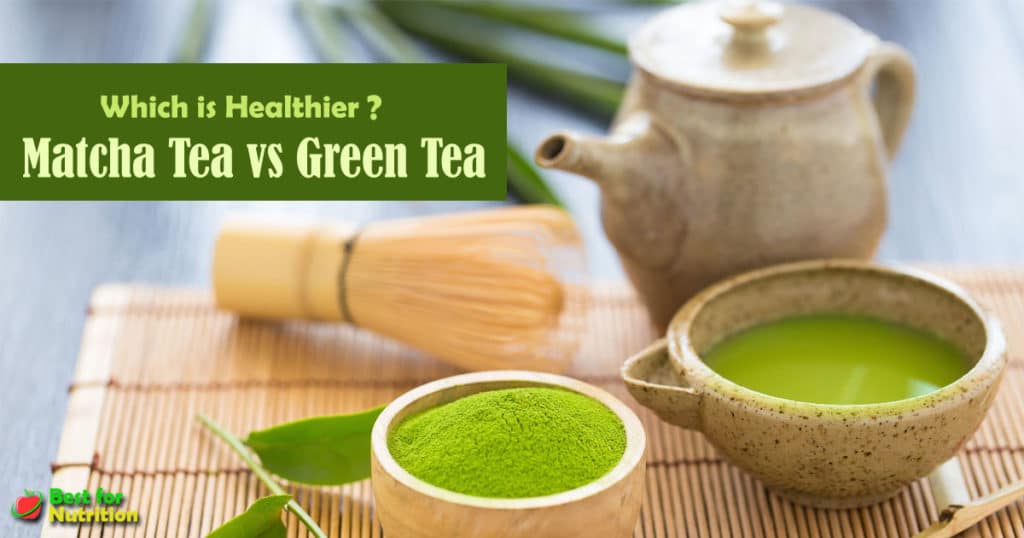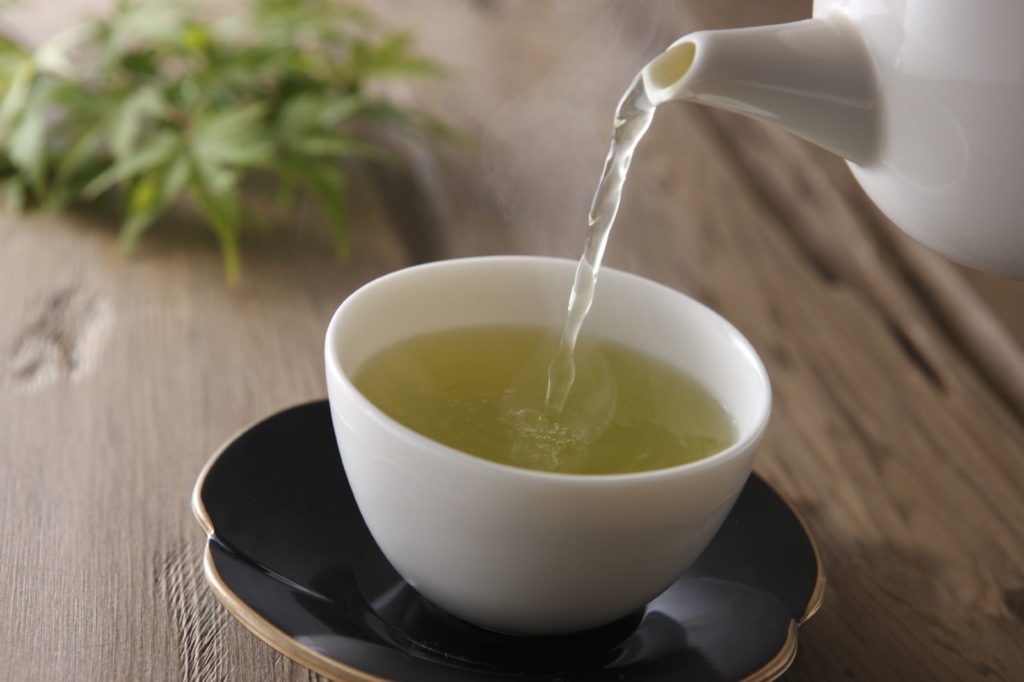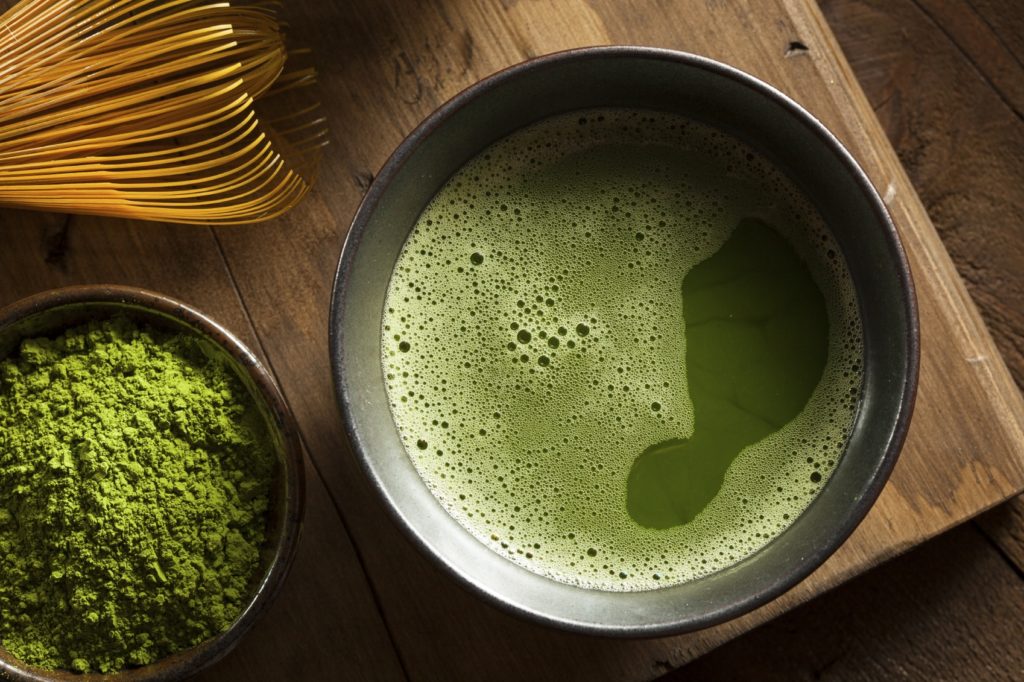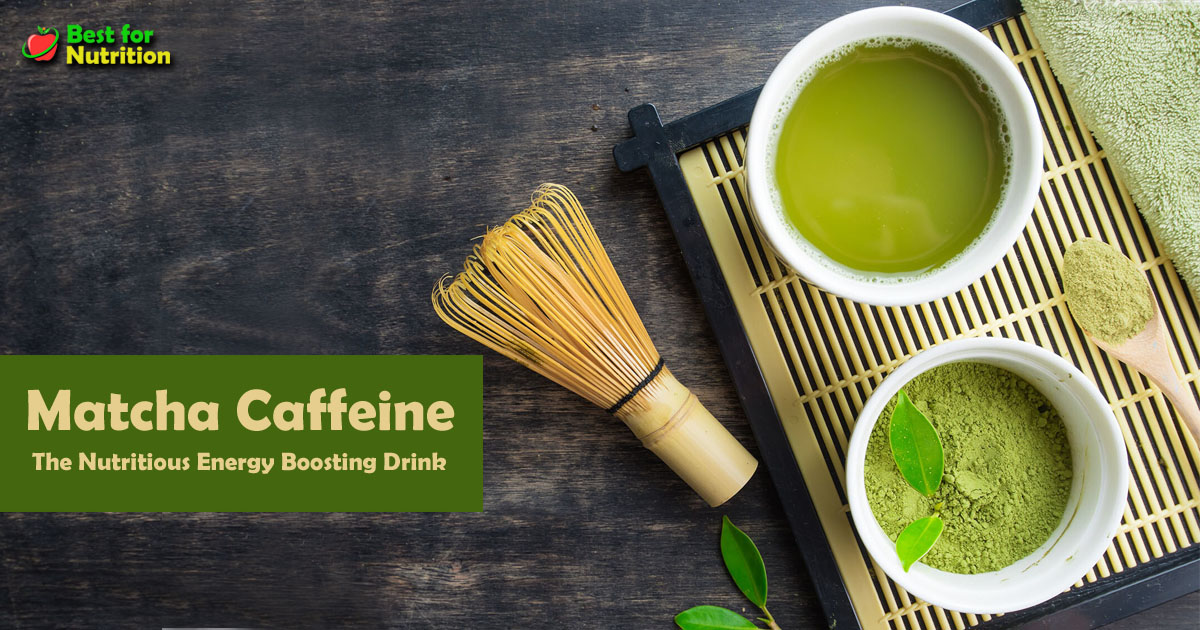Green tea is an immensely popular health drink consumed worldwide. There are innumerable varieties of green tea available in the market. But the one that stands out significantly above the rest of the green tea varieties is the Matcha tea.
Matcha is considered much healthier than regular green tea.
While both matcha and green tea are produced from the leaves of the tea shrub Camellia Sinensis, they vastly differ in terms of origin, processing, preparation, flavor, nutrition, and health benefits.
Green tea is generally loose leaf tea which is infused to make green tea. Matcha, on the other hand, is powdered tea obtained from green tea leaves, cultivated, harvested, and processed at a particular stage.
Unlike green tea, matcha tea contains the whole tea leaf and hence is more concentrated than green tea. While most tea lovers relish both green and matcha tea types, many people choose their teas based on their nutritional content and flavors.
Read on to discover the many differences between green tea and matcha tea and to determine the tea of your choice.

The History of Green Tea vs Matcha Tea
The origins and history of matcha tea are not exactly different from that of green tea. The concept of green tea was passed onto Japan from China, where matcha found its roots.
Green Tea
Green tea originated in China nearly 5000 years ago. Its discovery is credited to the Chinese Emperor Shennong in 2732 B.C. Initially consumed only by royalty and served to important guests, green tea slowly became popular owing to its various health benefits and was recommended as part of Chinese medicine and therapy.
By the 7th century, green tea was a part of every household and became indispensable to the Chinese people.
Matcha Tea
Japanese monks visiting China took green tea back to Japan in the 7th century, but only by the end of the 11th century did green tea, especially matcha, was seriously cultivated when the Zen monk, Eisai, took seeds from China to grow green tea in Japan. The Japanese terms ‘ma’ meaning powder and ‘cha’ meaning tea define matcha as ‘powdered tea’.
Initially enjoyed only by the nobles and monks, matcha tea soon gained recognition and became an integral part of the famed Japanese tea ceremony for many centuries. By the 15th century, matcha was an established and inevitable part of Japanese culture and way of life.
Summary: Green tea and matcha tea have deep-rooted histories in different countries. Though matcha is a type of green tea introduced from China, it plays an important role in the traditional tea ceremony exclusive to Japan.
The Cultivation and Processing of Green Tea vs Matcha Tea
Green tea today is grown in several countries such as Japan, Korea, Vietnam, and India, but the majority still comes from China. Matcha tea is grown exclusively in Japan to date.
Green Tea
Green tea is sun-grown globally and mostly handpicked during the harvesting season which occurs thrice a year. Only the top two leaves and buds are picked and the shrub regrows fresh leaves for the next harvest.
The fresh whole leaves are then quickly steamed lightly to prevent the oxidation process from setting in. Once cool, they are rolled and dried to form loose tea.
Matcha Tea
The Japanese matcha tea is shade-grown for the final 3-4 weeks before harvest. This technique prevents photosynthesis, increasing the chlorophyll and amino acid content of the leaves.
Only the top leaves are handpicked during spring. Once harvested, the leaves are de-stemmed and de-veined to provide the smoothness, steamed lightly, air-dried, and finally stone-ground using granite blocks into a fine powder.
This long and tedious process is the reason why matcha is expensive compared to regular green tea.
Summary: Green tea is sun-grown while matcha is shade-grown for the final month before harvest. The differences in cultivation, processing, and powdering of matcha are tedious which makes it more expensive than green tea.
Color and Flavor of Green tea vs Matcha tea
Owing to the differences in cultivation and processing methods, green tea and matcha tea tend to differ in terms of color and flavor too.
Green Tea

Green tea has a slightly brownish, dull green color with a gritty texture owing to the dried leaf form.
Green tea is slightly bitter but light and refreshing. It can vary in flavor and may taste fruity, nutty, grassy or vegetal depending on the processing and also due to the addition of herbs or plant extracts.
Matcha Tea

Matcha tea is of a bright green color owing to the higher chlorophyll content and has a smooth velvety texture in its powdered form.
Matcha has a rich, intense but naturally sweet flavor that enables it to be consumed in different methods.
Summary: Green tea and matcha tea differ in flavor and texture too. While green tea has a light but slightly bitter flavor, matcha is richer and sweeter which makes it more pleasant.
Health Benefits of Green Tea vs Matcha Tea
Green tea and matcha mostly offer the same health benefits but with variations. Matcha tea may score higher in terms of nutrition and a much more palatable flavor. Listed are the various health benefits both the teas offer and the significant differences in them.
High in Antioxidants
Green tea is high in antioxidants which are in the form of flavanols or catechins. Green tea polyphenols are known to be beneficial to health and are used in treating a variety of ailments such as cancer, inflammation, cardiovascular issues, and diabetes. (1)
The most powerful of the catechins is epigallocatechin gallate (EGCG), which is widely researched for its high antioxidant properties.
Green Tea
Regular consumption of green tea provides the body with plenty of antioxidants that help fight free radicals and protect the body from oxidative stress damage at a cellular level. (2)
But, because green tea leaves are infused and then discarded, some nutrients are also lost in the process.
Matcha Tea
Matcha tea is found to have 3 times higher antioxidant levels than other green tea varieties. The shade-grown cultivation and minimal processing methods ensure more antioxidant content than regular green tea. (3)
Since matcha tea is powdered using whole leaves, regular matcha consumption ensures one gets the maximum benefit of the antioxidants and nutrients in the leaves. (4)
Summary: Green tea and matcha tea have high antioxidants and polyphenols content. But, owing to the shade-grown method in the final stages and consumption of whole leaves in powder form, matcha has a higher concentration of antioxidants and nutrients than regular green tea.
May Lower the Risk of Cardiovascular Diseases
Cardiovascular diseases are the number 1 reason for mortality worldwide according to the World Health Organization (WHO). (5)
Green Tea
Research indicates that green tea consumption may effectively help lower the risks of getting heart disease. (6)
Intake of green tea has shown to reduce total cholesterol (TC) and bad cholesterol (LDL), both significant biomarkers for cardiovascular diseases. (7)
Matcha Tea
Studies on matcha tea have indicated that matcha extracts lowered TC, LDL, and triglycerides while elevating the good cholesterol (HDL). It also had a significant impact on lowering glucose levels that may prevent diabetes. (8)
Summary: Green tea or matcha consumption may lower the incidence of heart diseases. While consumption of green tea helps reduce TC and LDL levels, matcha tea significantly lowers lipid as well as glucose levels in the body.
May Assist in Weight Reduction
Weight management is stubbornly difficult and involves multiple factors, one of them being the inclusion of healthy foods. Green tea varieties have long been known to be beneficial for those looking for weight loss.
Green Tea
Studies show that green tea with its catechin EGCG and caffeine content may aid in good weight reduction when consumed regularly for 12 weeks or more. (9)
Experiments with green tea extracts have shown that weight loss is induced through thermogenic properties of green tea, fat oxidation, or both in conjunction. (10)
Matcha Tea
Studies indicate that matcha tea may be effective in burning fat or promoting fat oxidation in women who engage in regular physical activity such as brisk walking. (11)
Since matcha tea ranks higher nutrition-wise, it may work better as a natural fat burner. Research on natural fat burners revealed that green tea has shown the potential to increase fat metabolism at rest, as well as during exercise, which may help in weight management. (12)
Summary: Weight loss depends on several factors and research suggests that consumption of matcha or green tea with their thermogenic properties acts as natural fat burners and may aid fat loss whether at rest or during exercise.
May Help Relax and Boost Cognitive Performance
Green tea varieties are rich in the amino acid L-theanine. This amino acid apart from boosting taste in green teas also enhances the alpha brain waves that lower stress, aid relaxation, and increase mental alertness. (13)
Green Tea
Research suggests that l-theanine is the constituent that acts as a neurotransmitter and also responsible for providing relaxation without drowsiness through means of consuming green tea. (14)
Some studies show consumption of green tea or extracts can help improve cognitive performances. (15)
Matcha Tea
Matcha contains higher levels of L-theanine than all other varieties of green tea.
A study on the different constituents of matcha tea such as l-theanine, caffeine, and EGCG showed that individually and in combination helped improve relaxation, alertness, lowered tension, and increased memory span. (16)
Another study involving matcha tea, matcha bars, placebo tea, and snack bars along with cognitive tests revealed that participants who consumed matcha products showed improved attention and psychomotor speed in some cognitive tasks compared to the placebo products. (17)
Summary: The L-theanine amino acid is responsible for the relaxing effects and mental alertness that one experiences on consuming green tea. Studies indicate that matcha with higher quantities of l-theanine may improve cognitive speed and attention in some tasks than other teas.
The Preparation of Green Tea vs Matcha Tea
The preparation of green tea and matcha tea differs from one another and is the reason for the unique flavor of each tea.
Green Tea
Green tea preparation depends on the type of green tea used but in general, follows the method of infusion. Regular green tea preparation involves infusing the loose leaves for about 1 to 4 minutes in a pot or cup of hot water with a temperature between 140-175 degrees, to get that light, refreshing flavor unique to green tea.
Matcha Tea
Matcha tea preparation, due to its powdered form, follows a swift whisking method that has been handed down from the traditional Japanese tea ceremony.
Matcha is prepared in standard, thin or thick consistency. The general method involves taking a teaspoon of matcha powder in a bowl to which 2-4 ounces of hot water with a temperature of under 175 degrees is added, The entire mixture is then whisked using a bamboo whisk until a smooth, frothy layer forms on top.
Matcha can be served with a sweetener or as a latte. The fine matcha powder is used to create vibrant-colored smoothies and often added to flour during baking.
Summary: Infusion and whisking are the methods used in preparing green tea and matcha, respectively. While green tea is consumed plain or with a mild sweetener, matcha is consumed plain or as a latte and is suitable for baking.
The Final Note
Green tea has been favored for centuries in China and Japan as both traditional and health-benefiting drinks. Today, green tea is cultivated and used as one of the best health drinks that can offer numerous benefits to one’s well-being.
Matcha, a type of green tea, was exclusive to the Japanese people for thousands of years and is loaded with higher nutrients owing to its unique cultivation and processing methods.
Though both the teas differ right from cultivation to flavor, they offer similar health benefits with matcha scoring more on the nutritional side. Drinking green tea or matcha tea can provide various health benefits such as improved cognitive performance, higher antioxidants to protect against diseases, improved heart health, and significant weight loss.
Green tea may be light and refreshing, but matcha tea consumption may be more beneficial due to the intake of whole green tea leaves in powdered form. Matcha also has the advantage of being more palatable because of its sweeter taste and ease of consumption via lattes or baked goods.
Opt for 3-4 cups of green tea or 1-2 cups of matcha tea every day to gain maximum health and mental well-being.
